Showing Spotlights 649 - 656 of 2879 in category All (newest first):
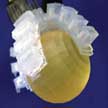 Electronic skin (e-skin) technology will give prosthetics and soft robotics a finer sense of touch, of what's hard and soft, hot and cold, smooth and rough. Researchers have now demonstrated a soft robotic hand integrated with four tactile force sensors and one temperature sensor to give it similar sensitivity to a human hand. By integrating an e-skin, the tactile pressure to grab an object and the friction movement of an object from the hand can be monitored. Thanks to the arrangement of multiple tactile sensors, e-skin-integrated soft robotic hand also can monitor sliding of an object by detecting the time delay of the tactile force.
Electronic skin (e-skin) technology will give prosthetics and soft robotics a finer sense of touch, of what's hard and soft, hot and cold, smooth and rough. Researchers have now demonstrated a soft robotic hand integrated with four tactile force sensors and one temperature sensor to give it similar sensitivity to a human hand. By integrating an e-skin, the tactile pressure to grab an object and the friction movement of an object from the hand can be monitored. Thanks to the arrangement of multiple tactile sensors, e-skin-integrated soft robotic hand also can monitor sliding of an object by detecting the time delay of the tactile force.
Jun 20th, 2019
 There is a huge effort underway to use memristor devices in neuromorphic computing applications and it is now reasonable to imagine the development of a new generation of artificial intelligent devices with very low power consumption (non-volatile), ultra-fast performance and high-density integration. In new work,r esearchers were not only able to achieve to small switching effects in memristors using light, they take advantage of a percolating-like nanoparticle morphology to vastly increase the magnitude of the switching between electronic resistance states when light is incident on the device.
There is a huge effort underway to use memristor devices in neuromorphic computing applications and it is now reasonable to imagine the development of a new generation of artificial intelligent devices with very low power consumption (non-volatile), ultra-fast performance and high-density integration. In new work,r esearchers were not only able to achieve to small switching effects in memristors using light, they take advantage of a percolating-like nanoparticle morphology to vastly increase the magnitude of the switching between electronic resistance states when light is incident on the device.
Jun 19th, 2019
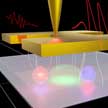 Electronic transitions between confined states within a quantum well are widely used in optoelectronics. Familiar examples include quantum cascade lasers and quantum well infrared photodetectors, which can operate in a wide range of wavelengths, from the far- to near-infrared. There is growing interest in studying this phenomenon because it may enable novel devices such as polariton lasers and because the physics of ISB polaritons is relatively unexplored. Researchers now demonstrated that it is possible to study polaritons in a single isolated nanoantenna.
Electronic transitions between confined states within a quantum well are widely used in optoelectronics. Familiar examples include quantum cascade lasers and quantum well infrared photodetectors, which can operate in a wide range of wavelengths, from the far- to near-infrared. There is growing interest in studying this phenomenon because it may enable novel devices such as polariton lasers and because the physics of ISB polaritons is relatively unexplored. Researchers now demonstrated that it is possible to study polaritons in a single isolated nanoantenna.
Jun 18th, 2019
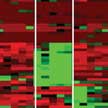 When nanoparticles enter the blood stream or other biological fluids, they are quickly surrounded by a layer of proteins. This so-called protein corona on the nanoparticles hinders interactions between the targeting ligands on the nanoparticles and their binding partners on the cells' surface. Different individuals may have a personalized protein corona owing to their distinct type, severity and period of disease, heterogeneity, individual genetic variations and environmental factors. By combining the concepts of disease-specific protein corona and sensor array technology, researchers now have created a label-free platform for the early detection and identification of diseases.
When nanoparticles enter the blood stream or other biological fluids, they are quickly surrounded by a layer of proteins. This so-called protein corona on the nanoparticles hinders interactions between the targeting ligands on the nanoparticles and their binding partners on the cells' surface. Different individuals may have a personalized protein corona owing to their distinct type, severity and period of disease, heterogeneity, individual genetic variations and environmental factors. By combining the concepts of disease-specific protein corona and sensor array technology, researchers now have created a label-free platform for the early detection and identification of diseases.
Jun 17th, 2019
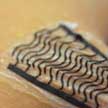 To realize the commercial potential of graphene, for instance for wearable electronics, it is necessary to develop reliable, cost-effective and facile processes for the industry-scale fabrication of graphene-based devices. A novel solution involves the synthesis of high-performance stretchable graphene ink using a facile, scalable, and low-cost laser induction method for the synthesis of the graphene component. This also is the first example of using laser-induced graphene in the form for a powder preparation of graphene-based inks and subsequently for use in screen-printing of stretchable micro-supercapacitors.
To realize the commercial potential of graphene, for instance for wearable electronics, it is necessary to develop reliable, cost-effective and facile processes for the industry-scale fabrication of graphene-based devices. A novel solution involves the synthesis of high-performance stretchable graphene ink using a facile, scalable, and low-cost laser induction method for the synthesis of the graphene component. This also is the first example of using laser-induced graphene in the form for a powder preparation of graphene-based inks and subsequently for use in screen-printing of stretchable micro-supercapacitors.
Jun 14th, 2019
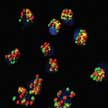 A critical challenge in gene therapy is the safe and effective delivery of genetic materials across cell membranes into target cells. Although viral systems have been the most effective method for delivering genetic matter into cells, they pose significant safety problems. Demonstrating a novel alternative delivery vector, researchers have developed a facile one-pot strategy to encapsulate plasmid DNA into nanoscale metal-organic frameworks (MOFs) and a MOF-polymer system Experiments showed that pDNA molecules could be well distributed throughout the MOF nanostructures and benefited from effective protection against the enzymatic degradation.
A critical challenge in gene therapy is the safe and effective delivery of genetic materials across cell membranes into target cells. Although viral systems have been the most effective method for delivering genetic matter into cells, they pose significant safety problems. Demonstrating a novel alternative delivery vector, researchers have developed a facile one-pot strategy to encapsulate plasmid DNA into nanoscale metal-organic frameworks (MOFs) and a MOF-polymer system Experiments showed that pDNA molecules could be well distributed throughout the MOF nanostructures and benefited from effective protection against the enzymatic degradation.
Jun 13th, 2019
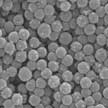 Nanoparticle characterization is a broad and complex discipline. Even today, researchers are still challenged by the task of determining the physicochemical properties of nanoparticles and exploring their structure-function relationships. A recent review article provides a set of guidelines to investigate and characterize the key parameters defining a nanoparticle sample, namely size, shape, surface charge, and porosity. It also provides recommendations of how the physicochemical parameters of nanoparticles should be investigated, and how to characterize these key properties in different environments according to the intended nanoparticle use.
Nanoparticle characterization is a broad and complex discipline. Even today, researchers are still challenged by the task of determining the physicochemical properties of nanoparticles and exploring their structure-function relationships. A recent review article provides a set of guidelines to investigate and characterize the key parameters defining a nanoparticle sample, namely size, shape, surface charge, and porosity. It also provides recommendations of how the physicochemical parameters of nanoparticles should be investigated, and how to characterize these key properties in different environments according to the intended nanoparticle use.
Jun 5th, 2019
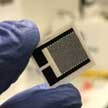 Bagasse is a waste plant matter obtained by food industry processes with major potential for several high-value products. An innovative idea of utilizing bagasse is for production of nanocellulose and testing this for wound dressing devices, manufactured by 3D printing. The next step in the development of wound dressings is the personalized aspect of the biomaterials, i.e. wound dressings that are structured and composed of constituents specially selected for a specific wound and wound treatment. Furthermore, sensors could be integrated into wound dressings and thus monitor various aspects of wound development, e.g. moisture and exudates in chronic wounds.
Bagasse is a waste plant matter obtained by food industry processes with major potential for several high-value products. An innovative idea of utilizing bagasse is for production of nanocellulose and testing this for wound dressing devices, manufactured by 3D printing. The next step in the development of wound dressings is the personalized aspect of the biomaterials, i.e. wound dressings that are structured and composed of constituents specially selected for a specific wound and wound treatment. Furthermore, sensors could be integrated into wound dressings and thus monitor various aspects of wound development, e.g. moisture and exudates in chronic wounds.
Jun 3rd, 2019
 Electronic skin (e-skin) technology will give prosthetics and soft robotics a finer sense of touch, of what's hard and soft, hot and cold, smooth and rough. Researchers have now demonstrated a soft robotic hand integrated with four tactile force sensors and one temperature sensor to give it similar sensitivity to a human hand. By integrating an e-skin, the tactile pressure to grab an object and the friction movement of an object from the hand can be monitored. Thanks to the arrangement of multiple tactile sensors, e-skin-integrated soft robotic hand also can monitor sliding of an object by detecting the time delay of the tactile force.
Electronic skin (e-skin) technology will give prosthetics and soft robotics a finer sense of touch, of what's hard and soft, hot and cold, smooth and rough. Researchers have now demonstrated a soft robotic hand integrated with four tactile force sensors and one temperature sensor to give it similar sensitivity to a human hand. By integrating an e-skin, the tactile pressure to grab an object and the friction movement of an object from the hand can be monitored. Thanks to the arrangement of multiple tactile sensors, e-skin-integrated soft robotic hand also can monitor sliding of an object by detecting the time delay of the tactile force.
 Subscribe to our Nanotechnology Spotlight feed
Subscribe to our Nanotechnology Spotlight feed





